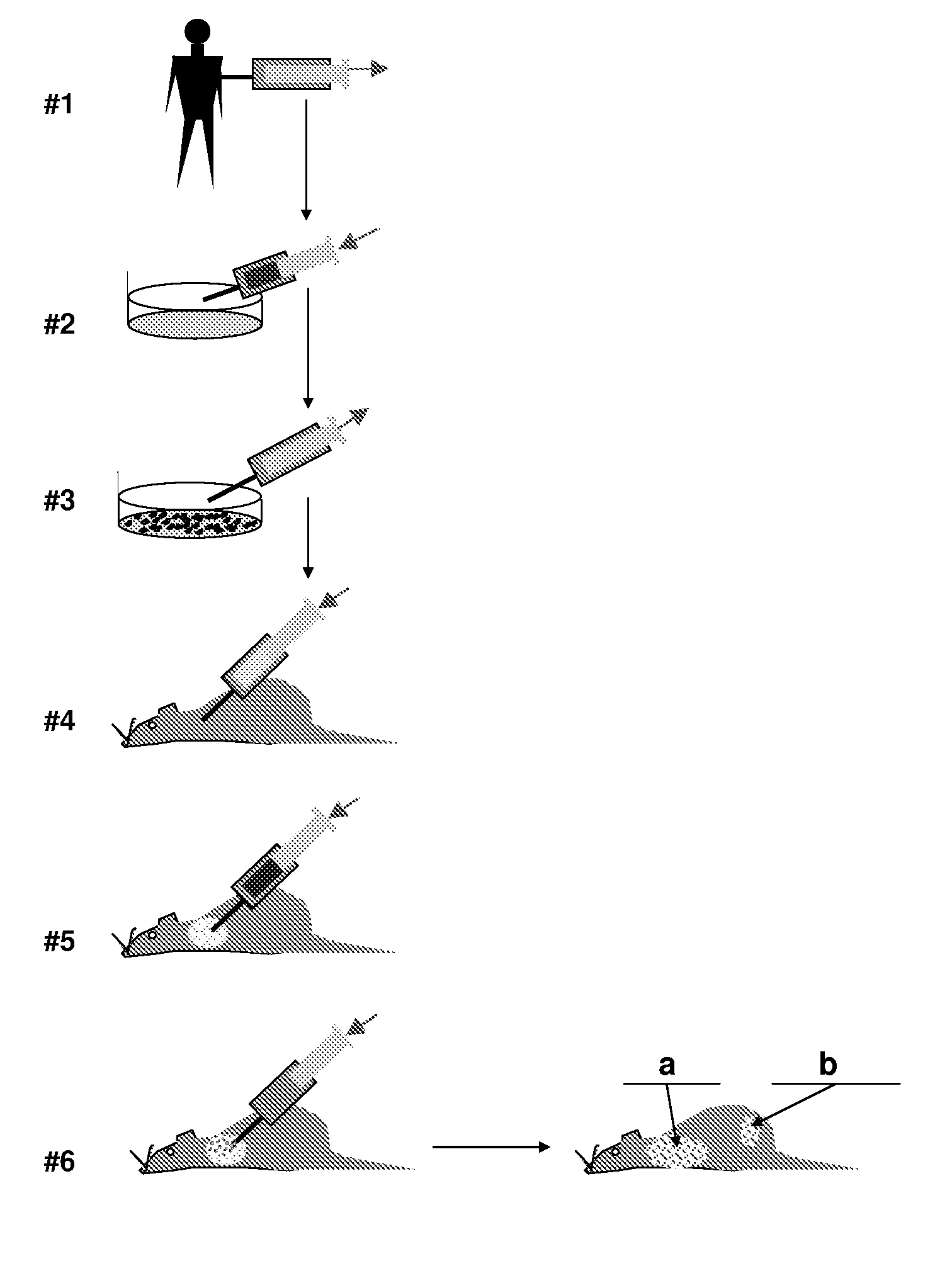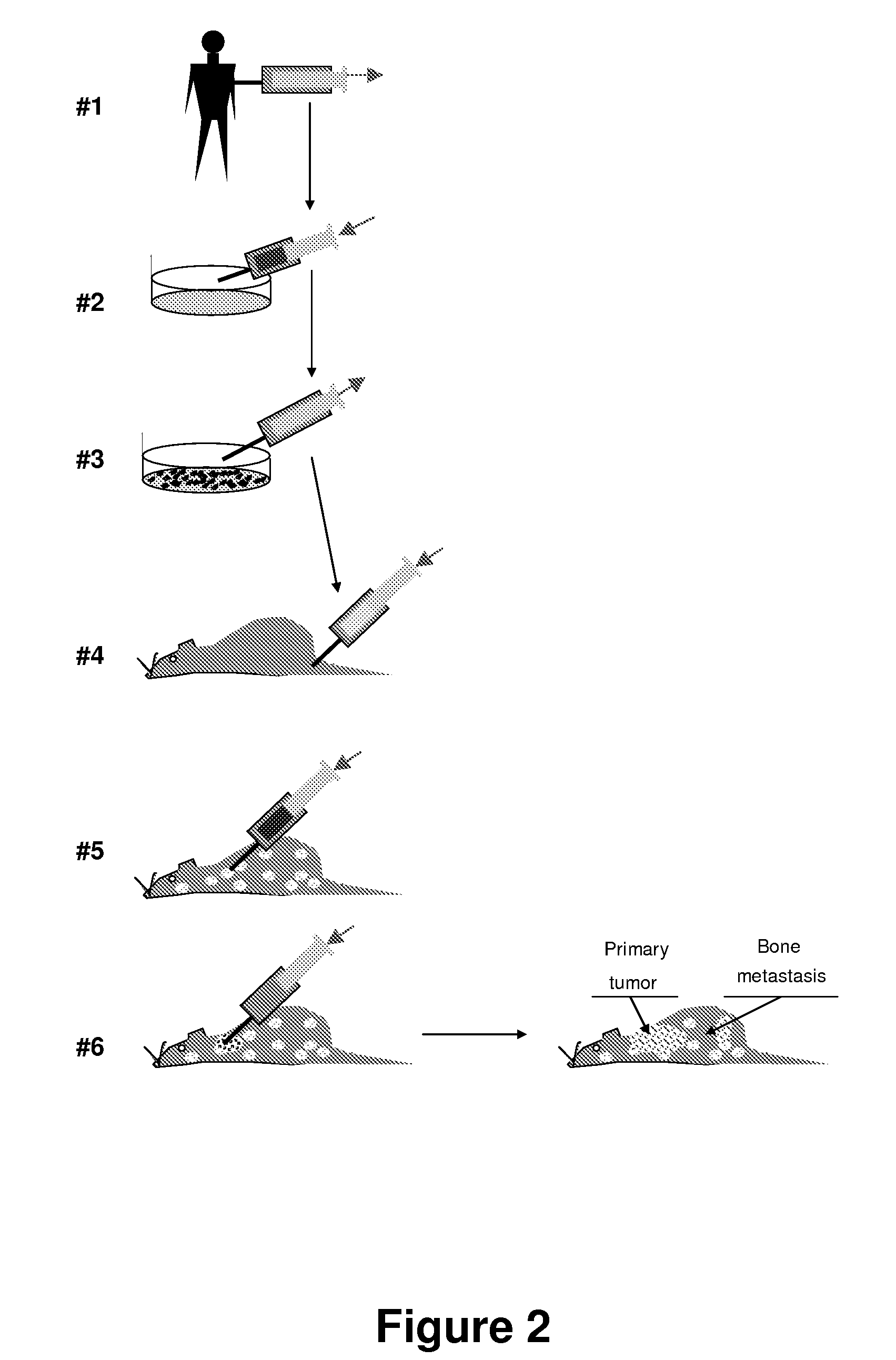Animal models of tumor metastasis and toxicity
- Summary
- Abstract
- Description
- Claims
- Application Information
AI Technical Summary
Benefits of technology
Problems solved by technology
Method used
Image
Examples
example 1
Isolation of Tissues from Human Fetal Tissues and Grafting into Immunodeficient Animals (SCID-hu Mice).
[0129]C.B-17 scid / scid mice are bred, treated with antibiotics, as is well known in the art, and used at an age 6 to 8 weeks. Anaesthesia is used during all operative procedures. The human fetal tissues are derived from curettage operation involving physical extraction without administration of prostaglandins or related drugs. The tissues are individually placed in sterile 50 ml tubes containing RPMI 1640 medium supplemented with 10% fetal bovine serum (FBS), 50 U / mL penicillin, and 50 pg / mL streptomycin at 4° C. The samples are then shipped on wet ice, received within 16 to 20 hours, and transplanted into SCID mice within 36 hours. Cells from fetal thymus or liver are tested for the presence of HIV by the DNA polymerase chain reaction as described in all cases before use. Human fetal femurs and tibias are obtained at 17 to 22 gestational weeks (gw), when intramedullary hematopoies...
example 2
In Vivo Metastasis Assays in SCID-hu Mice
[0131]SCLC cells grown in vitro as suspension cultures were harvested by centrifugation, resuspended in Hanks' balanced saline solution (HBSS), assessed for cell number and viability, and injected into SCID-hu mice via lateral tail vein (experimental metastasis assay). For spontaneous metastasis assay cells were injected directly into one of the HFL grafts through a small incision in the skin.
[0132]Histology. Fragments of human grafts, murine internal organs (lungs, liver, spleen, adrenals, and sometimes additional organs), backbones, and sternums were dissected and fixed in buffered 20% (vol / vol) formalin. Bone tissues were treated with decalcifying solution (Baxter Scientific Products, McGaw Park, Ill.). After paraffin embedding, 4 □m sections are cut and stained with hematoxylin / eosin.
example 3
Engraftment of MSC Cells into a Recipient Animal
[0133]There is a rational to this technique: the expected multiorgan tropism of human mesenchymal stem cells in a variety of epithelia. Seeding of human MSC on different mouse organs can be confirmed using a variety of techniques well known in the art (immunostaining, human or mouse specific PCRs, etc.). In a variation of the strochimeric technique, around the time of the MSC injection (preferentially, before), mice can be treated with physical (gamma radiation) or chemical agents with cytostatic activity, in order to suppress the mobilization and proliferation of autologous BM MSC. This treatment could enrich the engrafted human MSC population in different organs. The treatment, in addition to down-regulate the normal proliferative response of autologous BM MSC to injury, can induce a generalized injury to dividing epithelial tissues. The latter effect is likely to serve as a stimulus to homing for injected human MSC
PUM
 Login to View More
Login to View More Abstract
Description
Claims
Application Information
 Login to View More
Login to View More - R&D
- Intellectual Property
- Life Sciences
- Materials
- Tech Scout
- Unparalleled Data Quality
- Higher Quality Content
- 60% Fewer Hallucinations
Browse by: Latest US Patents, China's latest patents, Technical Efficacy Thesaurus, Application Domain, Technology Topic, Popular Technical Reports.
© 2025 PatSnap. All rights reserved.Legal|Privacy policy|Modern Slavery Act Transparency Statement|Sitemap|About US| Contact US: help@patsnap.com



